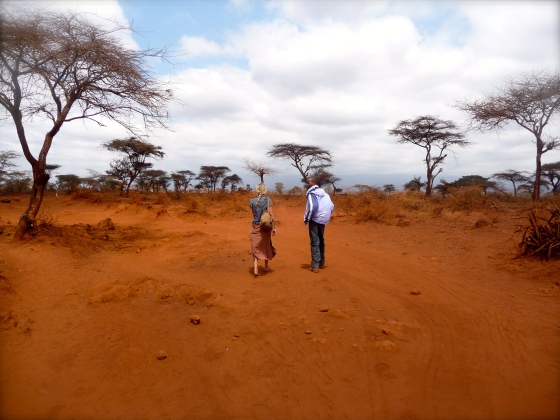Back in my world of wide eyes and even wider smiles and little hands that find my own. After six weeks on the road it really did feel like coming home pulling into KAASO where children came running to greet us from all directions. It’s like being a celebrity in a middle-of-nowhere, rural Uganda kind of way.

We had barely jumped off our motorbikes when we were taken by the hand and led on what felt like a glory tour around the school, hearing shouts as children ran from dormitories, racing over to welcome us home. We were given Ugandan hugs – i.e. being launched at with such force that last time we returned from a trip I ended up with a bruise on my hip bone.
We soon discovered that two months had not been enough time to fix the broken water pump and the children were still having to carry water from the well in jerry cans on their heads – this was ‘Africa time’ in the extreme. Energised from our trip and feeling the full motivation of just-returned-ness, Cherie and I decided the next day to go to the well with the children to fetch our own water rather than going out of minds with no water to bathe, wash clothes – or flush our toilet. I don’t think we quite realised what we were in for. We followed the children through the school, past several mud huts, through the forest, into a field where we continued to walk until we finally spotted the well – at the bottom of a rather large hill. Trying not to look fazed, we traipsed down the mud path until we got to the well. There was a crowd of children filling their jerry cans and no line that I could decipher but the children seemed to have some kind of system arranged between them. From what I could gather, it was largely based on hierarchy. Being two red-faced muzungus, we did not feature in this hierarchy.
Eventually, we realised that we would wait all day unless we just shoved our jerry cans under the water spout, pumped by a small child that seemed happy to continue pumping for us. We ambitiously filled two 10L jerry cans each then quickly realised our mistake; most of the children had one 5L jerry can. Yes, we were much bigger than most of them but not necessarily much stronger. We struggled back along the dirt track, having to pause embarrassingly frequently along the way. It was hugely satisfying to make it back to school and the looks on the teachers’ faces was worth the effort when they saw the two of us emerge amongst the children carrying our own jerry cans. Unfortunately we got distracted by the gorgeous nursery children who came running out to see us; many of them we hadn’t seen since we got back so we picked them up and spun them around and chatted as best you can with a 5-year-old Ugandan child. It wasn’t until some time later that we turned around to realise our jerry cans had gone. We searched everywhere until we finally asked Rose in desperation – ‘Where would you take a jerry can if you were a small child?’ To the kitchen, she smiled. Back down across the school and there were our jerry cans lined up neatly outside the children’s kitchen – a wooden shack with a fire and giant cauldron-like pot full of porridge. We grabbed our jerry cans and vowed to take more care next time – if we could manage a next time…





